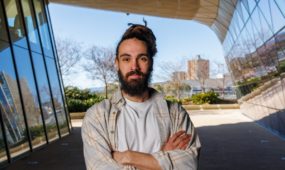Closing the gap in indigenous health - a new way forward
Health & Medical
SCIENTISTS have published a plan based on evidence and specific health standards to close the gap between indigenous and non-indigenous health in Australia.

Sign up to receive notifications about new stories in this category.
Thank you for subscribing to story notifications.
The plan for “Essential Service Standards for Equitable National Cardiovascular Care” for Aboriginal and Torres Strait Islander people (ESSENCE) was created by Professor Alex Brown from the Wardliparingga Aboriginal Research Unit at the South Australia Health and Medical Research Institute (SAHMRI).
Currently the program specifically targets heart disease but can be modified for other areas of health in the future.
Prime Minister Tony Abbott’s recent Closing the Gap Report reveals that the goal of closing the gap in life expectancy between indigenous and non-indigenous Australians within a generation – with a target year of 2031 – is not on track and making limited progress.
Data collected over the period 2010-2013 shows that the gap in life expectancy between indigenous and non-indigenous Australians is 10.6 years for males and 9.5 years for females.
“The differing life expectancies between indigenous and non-indigenous Australians is an important gap,” said Professor Brown, who is an Aboriginal man with qualifications in medicine, public health and science.
“Heart disease contributes most to the life expectancy gap in indigenous Australians,” he said. “ESSENCE is the very start of a targeted and exemplar approach to closing the gap.”
The plan differs from previous programs addressing indigenous health inequality in that it sets out evidence-based standards for health, and establishes pathways for achieving these across Australia.
“What’s unique about ESSENCE is the architecture of the response, how we’ve set it up,” said Professor Brown. “We’ve turned the evidence base around cardiovascular health into a set of minimum acceptable standards in terms of accessing basic care,” he said.
“If you’re going to close the gap, you have to fundamentally make sure that everyone gets equitable access to health care according to their needs. That’s what indigenous health has been all about, even since the 1970s.
“But until we can move from social, policy and political intent to practical and resourced implementation of equitable care for all Australians, the gap between Australians defined by culture, ethnicity, location and socioeconomic status may continue to widen,” said Professor Brown.
His plan sets standards not only for closing the life expectancy gap, but also reducing population levels of cardiovascular disease, improving health literacy in indigenous Australians, improving access to care and reducing patient and family suffering, and more.
The background and fundamentals of ESSENCE are described in two recent papers published in the journal Heart, Lung and Circulation (see paper 1 and paper 2). Professor Brown and his colleagues in Melbourne are now considering the practical aspects of the scheme.
“Now that all of the steps are laid out, the next stage is to say ‘OK, how do we measure the performance of the system?’ That’s what we’re planning now,” said Professor Brown.
“We aim to see where the gaps are, then work out what it’s going to take in terms of models of care, deliverables, what it costs and how we’re going to fund it.
“We’d basically like to perform a national audit of indigenous cardiovascular health,” he said.
The idea for ESSENCE was formulated at a 2009 meeting of the Cardiac Society of Australia and New Zealand, which was focused on health of Aboriginal and Torres Strait Islander and other indigenous populations. Funding from the Department of Health commenced in 2011.
Jump to next article



